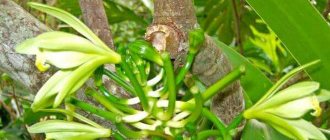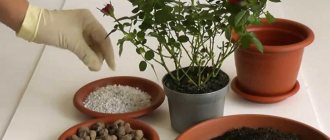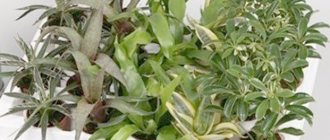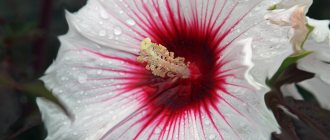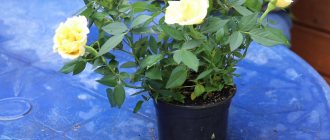Characteristics of a miniature or dwarf indoor rose
Botanical description
The mini rose is a member of the Rosaceae family. Like other types of ornamental plants, it can be climbing, shrubby, standard and ground cover.
About 250 types of roses have been developed for home cultivation, all of them differ in flower shape, color and size.
Peculiarities
A distinctive feature of the indoor plant is its miniature size. Compact sizes allow you to grow roses in small, confined spaces. An indoor rose in a pot will become a real decoration for any windowsill. The culture is distinguished by hard, dark green carved leaves, which are located on thick shoots with thorns.
Pros and cons of growing
The advantages of home cultivation of mini roses include:
- decorativeness;
- ease of care;
- frost resistance (even if the flower freezes a little, it will still produce many new shoots in the spring);
- resistance to many diseases;
- long flowering;
- a variety of colors to suit every taste.
This plant has practically no disadvantages, if you do not take into account its small size, since not every gardener likes it. But this is a great opportunity to plant flowers in any area.
Origin story
Until the end, the history of the origin of the indoor rose is unknown. Some sources say that the birthplace of the flower is Europe, while others say it is Southeast Asia. But the classic version is that the mini rose comes from China.
Popular varieties
Modern selection surprises with new forms and colors that amaze even the most demanding gardeners. Among all the diversity there are leaders, the most popular varieties of miniature roses:
ed macarena
"Red Macarena". Belong to highly branched varieties. The height of the bush does not exceed 50 cm. The flowers are dark red, rich wine color, with a diameter of 4-7 cm. Forms clusters of 4-6 densely double flowers. The bush is densely covered with dark shiny leaves. Blooms profusely from May to October in garden conditions.
Rose Sarah
"Sarah". Miniature cream rose. Forms a bush 40-45 cm high. Densely double flowers with a diameter of 5-6 cm, collected in inflorescences from 7 to 20 pieces. They have a pleasant aroma. The bush is very tender, the shoots are without thorns. The variety is valued for its abundant and long flowering from May until frost.
Rosa Catalina
"Catalina". Mini rose with two-color petals: the outer side is white, and the inner side is carmine-orange. Terry buds are cup-shaped. The bush is lush, up to 40 cm high, and has a pleasant aroma. Blooms continuously from late spring until the first frost.
Rose Crystal Palace
"Crystal Palace". Dwarf white variety. The height of the bush does not exceed 40 cm. It forms cup-shaped terry buds with a pointed tip. It blooms profusely from May to October, with lush clusters of inflorescences. The flowers exude a delicate, pleasant aroma.
Planting in a pot
- Before planting mini roses, you need to prepare the container.
- Be sure to clean the container from under the old plant with a brush without using detergents.
- If the pot has a drainage hole, then the expanded clay layer should be no more than 1 cm. If there are no holes, then the thickness of the drainage is 3 cm.
- To grow roses in a pot, you need to prepare nutritious and breathable soil.
It is better to purchase it in a specialized store. At home, you need to mix turf soil, humus and sand in proportions 4:4:1.
You should not loosen the soil, as there is a danger of trampling the roots.
How to care at home?
- Conditions of detention. To successfully grow a mini rose, you need to choose the right place, observe temperature, humidity and lighting.
- Place. A mini rose will require fresh air, so it is best to place it on the balcony. In the summer you can take the flower to the country house, but only with timely care.
- Temperature.
In winter, the rose enters a dormant period, so you need to maintain a temperature of 10-12 degrees Celsius. It is best to place the plant on a glassed-in loggia or balcony. If it is not possible to keep the rose at a low temperature, then it should be protected as much as possible from radiators and dry air. - Humidity. Indoor mini-roses require high air humidity.
If you keep them on the balcony or in the garden, then no additional moisture is required. In winter, when the rose is grown at home, place the pot on a tray with wet pebbles. Every day the rose needs water treatments - spraying. If the room is cool in winter, then the flower does not need to be sprayed. If the air is extremely dry and warm, shower 1-2 times a week, even in winter. - Lighting. For normal development of a mini-rose, it needs maximum light. But at the same time, direct sunlight is unacceptable. If the plant is located on a south-facing window sill, you will have to take care of shading with curtains. If this does not work, then it is better to move the pot to a window facing the west or east.
- Watering. For indoor roses, drying out of the soil is unacceptable, but overmoistening will also have a detrimental effect on the condition of the flower.
- In summer, during flowering, watering is carried out 2 times a day - in the morning and in the evening. To do this, use settled water at room temperature.
- With the onset of autumn, the rose will shed its leaves, so watering should be reduced to once a week if the flower is on the balcony.
- If you keep it in a room at a high temperature, then water it as the top layer of soil dries.
- You can alternate top and bottom watering, but be sure to drain excess liquid from the pan to prevent root rot.
- In the spring, as the rose awakens, moisture must be gradually increased.
- Feeding. Due to prolonged flowering, the rose loses its vigor and needs soil fertilization. Feeding should be done at the end of February once every 10 days. It is best to alternate mineral compositions with organic ones. After transplanting the plant into fresh soil, there is no need to apply fertilizer.
- Trimming. For pruning, you must use a sharp knife so that there are no torn parts on the branch, otherwise this may cause the death of the rose.
It is worth cutting to healthy tissue, above the bud, which faces outward. An oblique cut is made 5 mm above the kidney. During the pruning process, it is necessary to remove all weak and dry shoots, as well as those that do not have an upper bud. If two shoots are intertwined, one of them is also removed. If, after pruning, 2 stems form from one bud, the excess must be removed. All cut areas must be treated with activated carbon powder. - Transfer.
Mini roses do not really like replanting, so it is not worth doing it every year. The exception will be the small size of the pot. Procedure:- The new container needs to be cleaned and soaked.
Place the flower pot in water for 30 minutes. This will allow the earthen coma to better move away from the container.
- Using the transfer method, send the flower to a new pot and fill the roots with fresh substrate, compacting it near the plant.
- Prevention from pests and diseases. It is advisable to spray a newly purchased rose with the non-toxic drug Fitoverm. It will prevent infestation by mites, aphids and other harmful insects.
In addition, the following recommendations must be observed:- Do not allow the soil to become waterlogged.
Monitor the air humidity in the room.
- Avoid drafts and wind.
- Keep the flower in a place where there is no direct exposure to sunlight.
After transplanting, there is no need to water the rose, but it is better to place it in a shady place. After a week, the flower can be moved to a permanent and well-lit place.
Coraline
It got its name from its coral-red flowers with a hint of orange. The Coraline rose bush is small, only 30 cm, the flowers on it are arranged singly, but 10-12 bloom at a time. The downside is the lack of odor, but for home breeding this is rather an advantage.
Water Coraline with warm, settled water. Spray regularly both in summer, in the heat, and in winter. In winter, it is especially important to provide the rose with the desired temperature and sufficient humidity levels.
Reproduction
To propagate indoor flowers, they use the cutting method. Procedure:
- Using a sharp knife, cut a stalk whose length does not exceed 10 cm. Before doing this, be sure to treat the tool with a solution of potassium permanganate.
- Make the cut obliquely, right under the bud, then the cutting will take root better.
- Make the upper cut 5 mm above the kidney.
- Remove leaves from the bottom of the cutting.
- Place the plant for 10 hours in water with the addition of heteroauxin (14 tablets per 250 ml of water).
- Plant the cuttings in a mixture of sand and peat. Using film or a cut plastic bottle, create greenhouse conditions for the plant.
- Abundant watering is not necessary, otherwise the cutting will rot.
- Maintain a temperature in the room of at least 18 degrees and avoid direct sunlight on the plant.
After 30 days, the cuttings will have rooted and can be opened to acclimate to drier air, and then transplanted into a separate container.
Diseases and pests
The following diseases and pests can affect a domestic rose:
Chlorosis. You can recognize it by the yellowness on the leaves. Iron chelate is used to treat it.- Powdery mildew. It is characterized by the presence of white spots on the leaves and stems. Fungicides are used for treatment.
- Spider mite. It leaves a thin web between the leaves. If you do not start fighting this pest, it will provoke viral diseases. For treatment, it is effective to use Apollo or Fitoverm.
- Thrips and aphids. These insects attack buds and leaves, leading to their deformation. For treatment, insecticidal preparations intended for indoor plants are used.
Errors in care
Problems with indoor roses most often arise due to improper care. This is fraught with the following consequences:
- The growth and development of the plant stops . This is the result of poor nutrition. To eliminate the problem, it is necessary to fertilize regularly.
- Leaves are falling . This often occurs due to increased acidity of the soil. Adding lime to the soil will help eliminate the problem.
- The leaves turn yellow, wither and fall off . This is the result of a lack of light. You need to choose a suitable place for the plant, and light it with lamps in winter.
- Lack of flowering . This happens when there is no transplant. And although the rose doesn’t like it, events need to be held once every 2 years.
No less attractive are other indoor roses, reviews of which you will find on our website. Read about the bush variety, as well as Mix and Cordana roses.
A mini rose is a great opportunity to create a mini greenhouse in your home. Of course, it is difficult to care for such a plant, but this is only at first, so you will first need to gain experience with one flower, and only then buy other interesting varieties.
Yellow dollars
The yellow doll is a celebrity from 1962. The bush is small, neat, but spreading. Almost 30 cm high. The flowers are quite large, 3-4 in an inflorescence. Their shape is cup-shaped, the type is terry, and the color is lemon-yellow, which does not fade in the sun.
The aroma is not sharp, with fruity additives. The foliage is large and dark. Flowering occurs in mid-summer.
Yellow Dollar also needs plenty of light, proper watering, warmth and humidity. It is important not to ignore feeding, which is carried out once every 20 days. Typically, complex fertilizer for roses is used.
There is a climbing variety of Yellow Doll that reaches 1.5 m in length.
